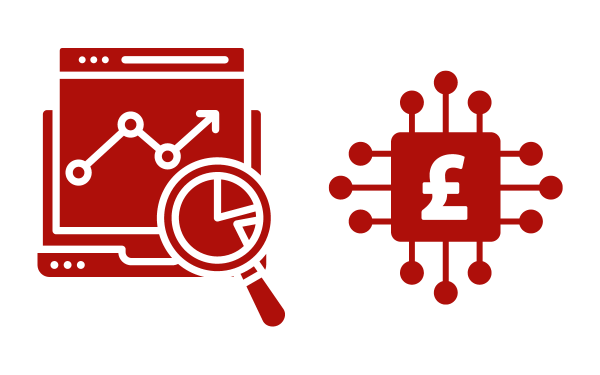The potential introduction of a ‘digital pound’ in the UK has moved a step closer after the Bank of England carried out a successful feasibility study using existing POS systems.
First mooted by the Bank of England in 2023, a digital pound would be an electronic alternative to coins and notes, moving currency in line with modern spending habits. While use of digital wallets and mobile banking is on the rise, all digital transactions are still ultimately linked to physical currency deposits held in banks. It is argued that a digital version of the pound would lead to a more streamlined system, and unlock value in the economy.
The digital pound would be a so-called ‘retail currency’ issued for day-to-day payments. It therefore would rely on retail payment infrastructure to work. The Bank of England wanted to determine whether current POS payment systems could accommodate a digital pound, as any need to update retail payment infrastructure would add billions to the cost of implementation, delay it by years and potentially make it unfeasible.
Why a digital pound?
The idea of digital currencies controlled by central banks is being explored by governments around the world. One of the main attractions is the potential to curb the power of private banks, which exert an enormous influence on the economy by holding cash deposits.
For example, every payment you make with a card or digital wallet has to be authorised by the bank that holds the associated cash deposits. Banks make money by charging for the role they play. With a digital pound, it would be like paying with coins or a note – no bank authorisation, no extra charges. It would be more direct, faster, and cheaper.
Reducing transaction costs would act as a counterpoint to inflation, benefitting all of us. It is also suggested that issuing a brand new version of currency could make up to £30bn for the Bank of England through what is known as ‘seigniorage’, or the difference between the value of new cash and its cost of production. This ‘profit’ would go straight into the public purse, providing a valuable source of income for government outside of taxation.
While they share similarities, a digital currency is not the same as a cryptocurrency. A digital currency’s value would be controlled by the Bank of England centrally and secured by the government, as is currently the case with Sterling, rather than functioning via a decentralised peer-to-peer ledger system and fluctuating in value according to trading markets.
What is the role of POS?
As mentioned, a key question for the Bank of England as it has moved to the design and proof of concept phase of the digital pound is how it would work with day-to-day payments. It therefore carried out a feasibility test using a range of existing POS devices, including checkout terminals, purpose-built mobile POS devices, and POS apps installed on Android mobile phones.
Payments were tested using EMV-compliant contactless applications and verification standards. An API was built to connect payment terminals to a proxy server that simulated the role of cash repository and authorising source.
In addition, the project team developed an app that would potentially allow digital payments to be processed offline, an important feature to mitigate network outages, but also to allow more flexibility in how and where payments could be taken.
Overall, the study’s conclusion was that current POS devices and infrastructure would be able to handle digital currency payments with minimal adaptation. Crucially, that would mean there would be no need for merchants to change POS systems should the digital pound be introduced.
A final decision on whether to move ahead with the digital pound is expected in 2025.




